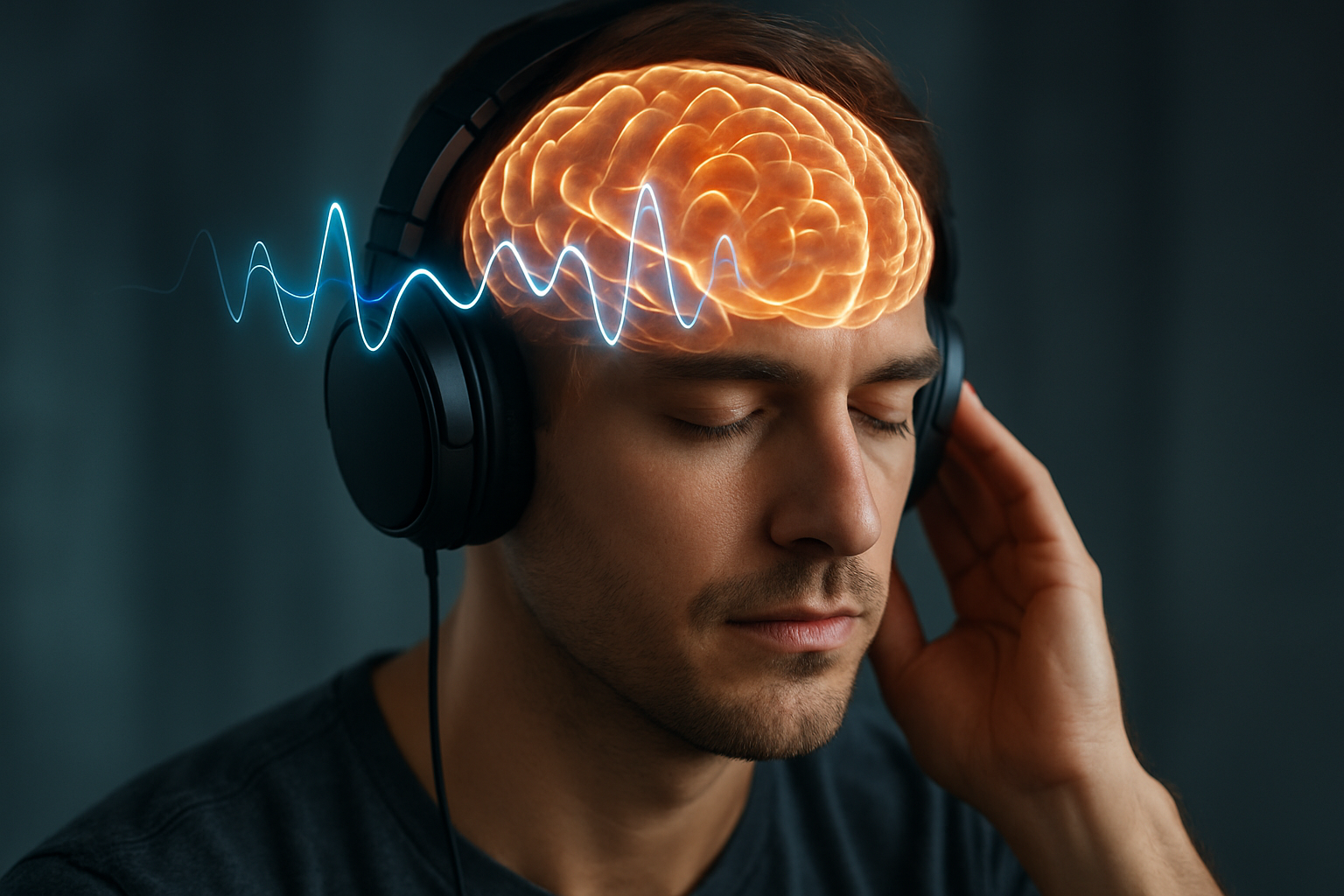Binaural Beats: Tuning Your Brain for Enhanced Well-being
Can sound waves really influence our mental state and overall health? Imagine a world where you could reduce stress, improve focus, and even enhance your sleep quality, all by simply listening to specific audio frequencies. This isn't science fiction—it's the intriguing realm of binaural beats, a fascinating intersection of neuroscience and auditory stimulation that's gaining traction in the wellness community.

The theory behind binaural beats suggests that this perceived tone can influence brainwave patterns through a process called brainwave entrainment. Different frequency ranges are associated with various mental states. For example, delta waves (0.5-4 Hz) are linked with deep sleep, while beta waves (13-30 Hz) are associated with alert, focused mental states.
Potential Benefits and Applications
Proponents of binaural beats claim a wide range of potential benefits, from reducing anxiety to enhancing cognitive performance. While research is still ongoing, some studies have shown promising results:
-
Stress Reduction: A 2019 study published in the journal Frontiers in Human Neuroscience found that listening to binaural beats in the theta frequency range (4-8 Hz) for 10 minutes led to reduced anxiety levels and improved mood in participants.
-
Improved Focus: Research published in Psychological Research in 2017 suggested that exposure to beta frequency binaural beats could enhance attention and reduce mind-wandering during a vigilance task.
-
Better Sleep Quality: A small study in the journal Sleep Medicine in 2018 indicated that listening to delta frequency binaural beats before bedtime might improve sleep quality in individuals with insomnia.
-
Pain Management: A 2017 study in the Journal of Alternative and Complementary Medicine found that binaural beats combined with visual stimulation could potentially reduce acute pain perception.
How to Use Binaural Beats
To experience binaural beats, you’ll need stereo headphones and a source of binaural beat audio. Many smartphone apps and online platforms now offer a variety of binaural beat tracks designed for different purposes. Here are some tips for incorporating binaural beats into your wellness routine:
-
Choose the right frequency: Different frequency ranges are associated with various desired effects. For relaxation, try theta frequencies (4-8 Hz). For focus and concentration, beta frequencies (13-30 Hz) might be more appropriate.
-
Set aside dedicated time: Start with short sessions of 15-30 minutes and gradually increase if desired. Consistency is key—regular practice may enhance the effects over time.
-
Create a suitable environment: Find a quiet, comfortable space where you won’t be disturbed. Some people find it helpful to combine binaural beats with meditation or relaxation techniques.
-
Be patient: Like any wellness practice, the effects of binaural beats may vary from person to person. It may take some time to notice any significant changes in your mental state or overall well-being.
Limitations and Considerations
While binaural beats show promise as a non-invasive tool for influencing mental states, it’s important to approach the practice with a balanced perspective:
-
Research is still limited: Many studies on binaural beats have small sample sizes or methodological limitations. More robust research is needed to fully understand their effects and potential applications.
-
Individual responses may vary: Not everyone experiences the same effects from binaural beats. Factors such as personal sensitivity to auditory stimuli and existing mental states can influence outcomes.
-
Safety considerations: While generally considered safe for most people, individuals with certain neurological conditions or those prone to seizures should consult a healthcare professional before using binaural beats.
-
Not a substitute for medical treatment: Binaural beats should be viewed as a complementary practice rather than a replacement for professional medical care or established treatments for mental health conditions.
The Future of Auditory Neurostimulation
As research in neuroscience and auditory processing continues to advance, the potential applications of binaural beats and other forms of auditory neurostimulation are expanding. Scientists are exploring their use in areas such as:
-
ADHD management: Preliminary studies suggest that certain binaural beat frequencies might help improve attention and reduce impulsivity in individuals with ADHD.
-
Memory enhancement: Researchers are investigating whether specific audio frequencies could enhance memory consolidation during sleep.
-
Chronic pain management: Building on existing research, scientists are exploring more targeted applications of binaural beats for various types of chronic pain.
-
Personalized audio therapy: Advances in EEG technology may soon allow for real-time biofeedback systems that adjust binaural beat frequencies based on an individual’s current brainwave patterns.
Tuning In: Quick Facts About Binaural Beats
• Binaural beats are most effective when the carrier tones are below 1000 Hz, with a frequency difference between 1 and 30 Hz.
• The use of binaural beats falls under the broader category of “brainwave entrainment,” which includes other techniques like isochronic tones and monaural beats.
• Some people report experiencing vivid imagery or enhanced creativity when listening to certain binaural beat frequencies.
• The effectiveness of binaural beats may be influenced by factors such as personality traits, baseline mood, and individual neurophysiology.
• Combining binaural beats with other relaxation techniques like deep breathing or guided imagery may enhance their effects.
As we continue to unravel the complex relationship between sound, brain function, and overall well-being, binaural beats offer an intriguing glimpse into the potential of non-invasive neuromodulation techniques. While not a panacea, this auditory phenomenon represents a fascinating intersection of technology and wellness, inviting us to explore new ways of influencing our mental states and enhancing our quality of life. As with any wellness practice, approach binaural beats with an open mind, realistic expectations, and a commitment to overall health and balance.





